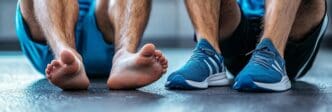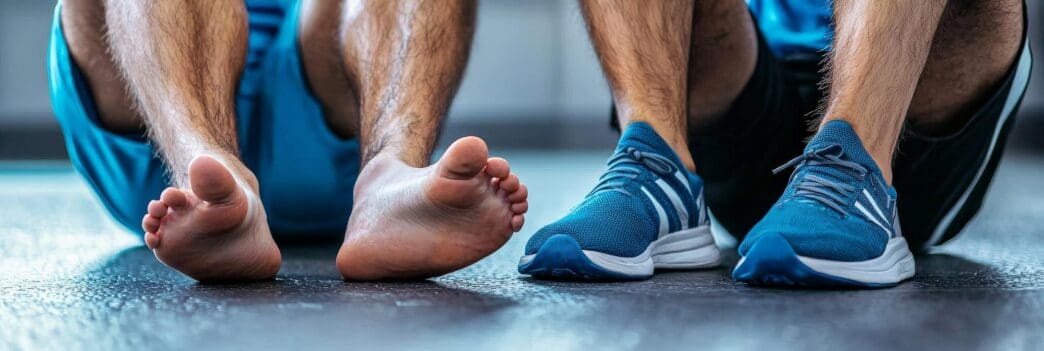A Quick Takeaway
The Story Behind the Trend
How to Make It Work for You
The Community View
Selecting the ideal running shoe goes far beyond aesthetics; it’s a critical decision that profoundly impacts comfort, performance, and injury prevention for runners of all levels. Understanding your unique foot strike—whether you land predominantly on your heel, midfoot, or forefoot—is paramount, as this fundamental biomechanical aspect dictates where you need cushioning, support, and flexibility the most, guiding you toward a shoe that complements your natural gait and supports a sustainable running practice.
Understanding Your Foot Strike
Your foot strike refers to the part of your foot that makes initial contact with the ground during your running stride. While individual variations exist, most runners can be categorized into one of three primary foot strike patterns, each with distinct implications for shoe choice.
The Heel Striker
A heel strike occurs when the back of your heel is the first part of your foot to touch the ground. This is the most common foot strike pattern, especially among recreational runners and those with longer strides. Heel strikers often benefit from shoes with ample cushioning in the heel to absorb the initial impact.
The Midfoot Striker
Midfoot striking involves landing on the middle portion of your foot, allowing the impact forces to be distributed more evenly across the foot. This strike pattern is often associated with a more efficient and natural running form, as it can leverage the foot’s natural shock-absorbing mechanisms. Midfoot strikers typically require shoes with balanced cushioning throughout the sole.
The Forefoot Striker
Forefoot striking means landing on the ball of your foot, with your toes making contact either simultaneously or just before the rest of your foot. This pattern is often seen in sprinters, minimalist runners, and those who prioritize propulsion. Forefoot strikers benefit from shoes with significant cushioning and flexibility in the forefoot, often with a lower heel-to-toe drop.
The Science Behind Shoe Choice and Foot Strike
The design of running shoes is meticulously engineered to cater to these different foot strike patterns, optimizing specific features to enhance performance and protect against common running-related issues.
Cushioning: Where You Need It Most
The placement and density of cushioning are directly influenced by foot strike. Heel strikers need robust cushioning in the rearfoot to mitigate the force of impact, while forefoot strikers require responsive cushioning in the front of the shoe for both absorption and efficient push-off. Midfoot strikers benefit from a more uniform distribution of cushioning, offering a balanced feel.
Support and Stability: Beyond Just the Arch
While arch type (pronation) is a primary factor in determining stability needs, foot strike can also play a role. Heel strikers, particularly those who overpronate (foot rolls inward excessively), may benefit from stability shoes designed to guide the foot through a more neutral path. Midfoot and forefoot strikers, who often exhibit more natural pronation, typically thrive in neutral shoes that offer flexibility without added motion control elements.
Heel-to-Toe Drop (Offset)
The heel-to-toe drop, or offset, is the difference in height between the heel and the forefoot of the shoe. A higher drop (e.g., 8-12mm) can encourage a heel strike, while a lower drop (e.g., 0-6mm) promotes a more natural midfoot or forefoot landing by reducing the elevation of the heel. Runners transitioning to a lower drop shoe should do so gradually to allow their calves and Achilles tendons to adapt.
How to Determine Your Foot Strike
Identifying your foot strike can be done through several methods. Observing yourself running in slow motion, either on a treadmill or with a friend filming, can provide clear visual evidence. Examining the wear patterns on the outsole of your old running shoes can also offer clues: excessive wear at the back of the heel suggests a heel strike, while wear concentrated under the ball of the foot indicates a forefoot strike. Visiting a specialty running store where experts can analyze your gait on a treadmill is often the most accurate and recommended approach.
Making Your Informed Choice
Once you have a better understanding of your foot strike, you can narrow down your shoe options. However, remember that foot strike is just one piece of the puzzle. The most important factor remains overall comfort. Always try on several pairs of shoes, ideally running a short distance in each, to assess how they feel. Consider your primary running goals—whether you’re training for marathons, speed work, or casual jogs—as well as the terrain you’ll be on (road, trail, track). Combining your foot strike knowledge with a comfort-first approach and expert fitting will lead you to the best running shoe for your individual needs.







